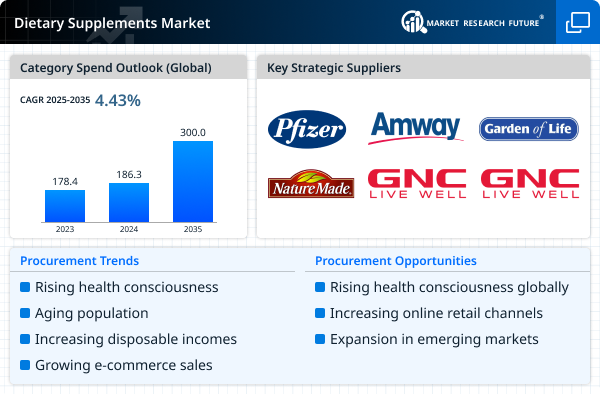Market Share
Caprylic/Capric Triglycerides Market Share Analysis
The Caprylic/Capric Triglycerides Market, a crucial player in the specialty ingredients industry, employs strategic market positioning to cater to the diverse needs of the cosmetic, personal care, and pharmaceutical sectors. Companies in this market utilize various strategies, including product differentiation, cost management, and innovation, to navigate consumer preferences and establish a competitive edge.
Product differentiation is a cornerstone strategy in the Caprylic/Capric Triglycerides Market. Companies aim to distinguish their offerings by emphasizing unique characteristics such as purity, source of fatty acids, or specific applications in cosmetic formulations. For instance, a company might highlight its commitment to producing sustainably sourced, non-GMO caprylic/capric triglycerides, appealing to consumers seeking natural and ethically produced ingredients for their skincare products. This differentiation not only attracts consumers with specific formulation requirements but also contributes to building a distinct brand identity in a market where ingredient quality is of utmost importance.
Cost leadership is another essential market share positioning strategy in the Caprylic/Capric Triglycerides Market. Companies strive to become the cost-effective providers of high-quality triglycerides by optimizing production processes, sourcing raw materials efficiently, and achieving economies of scale. This cost-conscious approach resonates with a broad customer base, particularly in the cosmetics and personal care industries where cost considerations influence product formulations. Becoming a cost leader allows companies to offer competitive prices while maintaining the quality and versatility of their caprylic/capric triglycerides, securing a larger market share.
Innovation plays a pivotal role in the Caprylic/Capric Triglycerides Market, with companies investing in research and development to create novel formulations, enhance stability, or explore new applications. Staying ahead of cosmetic trends enables companies to introduce caprylic/capric triglycerides with improved solubility, texture, or compatibility with various active ingredients. This innovation-centric approach not only addresses evolving consumer preferences but also positions companies as leaders in providing cutting-edge solutions for the cosmetic and personal care industries.
Strategic partnerships and collaborations are integral to market share positioning within the Caprylic/Capric Triglycerides industry. Companies often form alliances with cosmetic formulators, skincare brands, or research institutions to enhance product development, explore new applications, and expand market reach. Collaborative efforts can lead to improved formulation techniques, the discovery of synergies with other ingredients, or the creation of custom caprylic/capric triglyceride blends tailored to specific industry needs, ultimately strengthening a company's market position.
Geographical expansion is a significant strategy in the Caprylic/Capric Triglycerides Market, allowing companies to tap into new markets with diverse cosmetic preferences. This expansion may involve adapting products to meet regional regulations, establishing distribution networks, and tailoring marketing strategies to local beauty trends. By understanding and catering to the unique skincare and cosmetic concerns of consumers in different regions, companies can broaden their market share globally.
Customer-centric strategies are paramount in the Caprylic/Capric Triglycerides Market, where cosmetic and personal care consumers seek ingredients that are safe, effective, and compatible with their skin. Companies focus on building trust through transparent labeling, providing detailed information about the sourcing and manufacturing of caprylic/capric triglycerides, and ensuring compliance with industry standards. Engaging with consumers through educational initiatives, skincare forums, and online platforms helps companies establish a strong connection with their audience, fostering brand loyalty and solidifying market share.





Leave a Comment